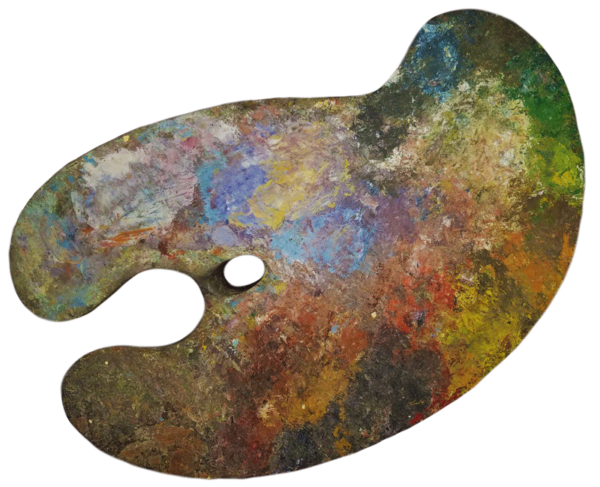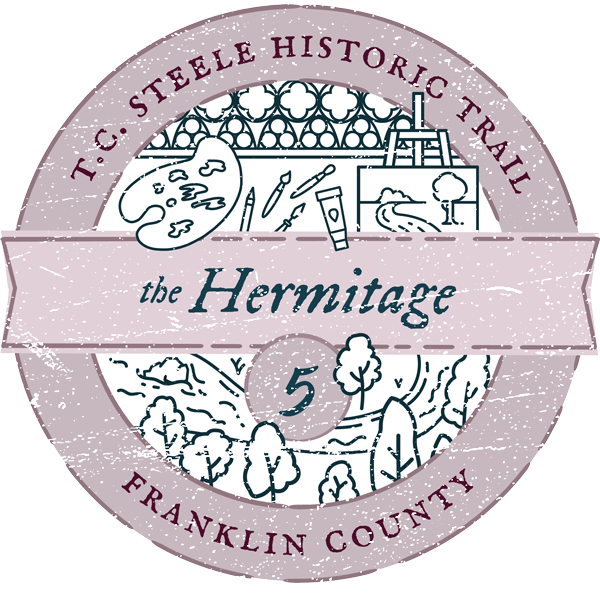
The Hermitage
650 E. 8th Street
Brookville, Indiana 47012 – USA
Latitude: 39.42328°N, Longitude: 85.00456°W
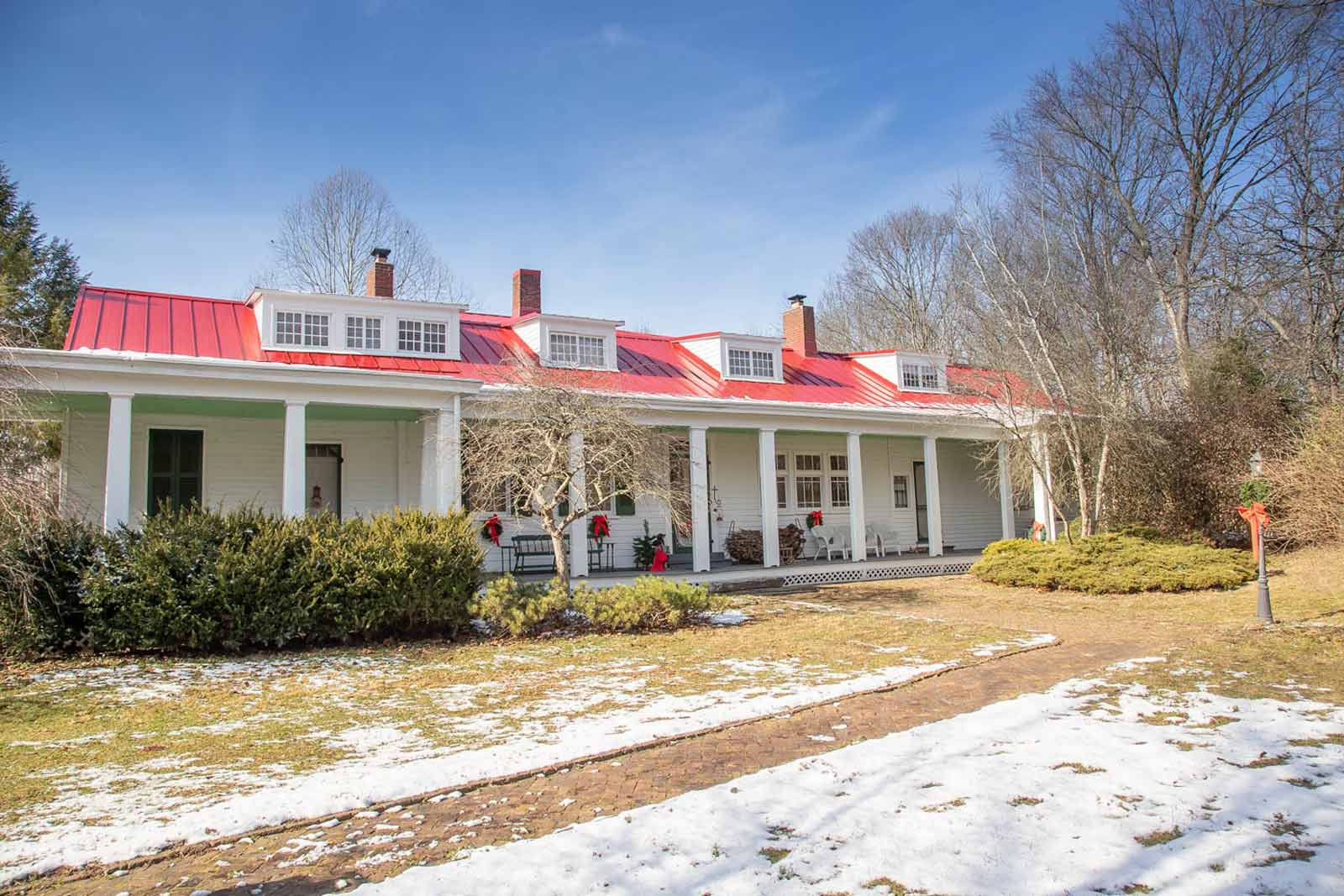
A Valley of Endless Inspiration
In 1896, T.C. Steele and fellow painter J. Ottis Adams began annual summer visits to the Whitewater River Valley. Located near Brookville, Indiana, this historic spot was established in 1808 and is now listed on the National Register of Historic Places.
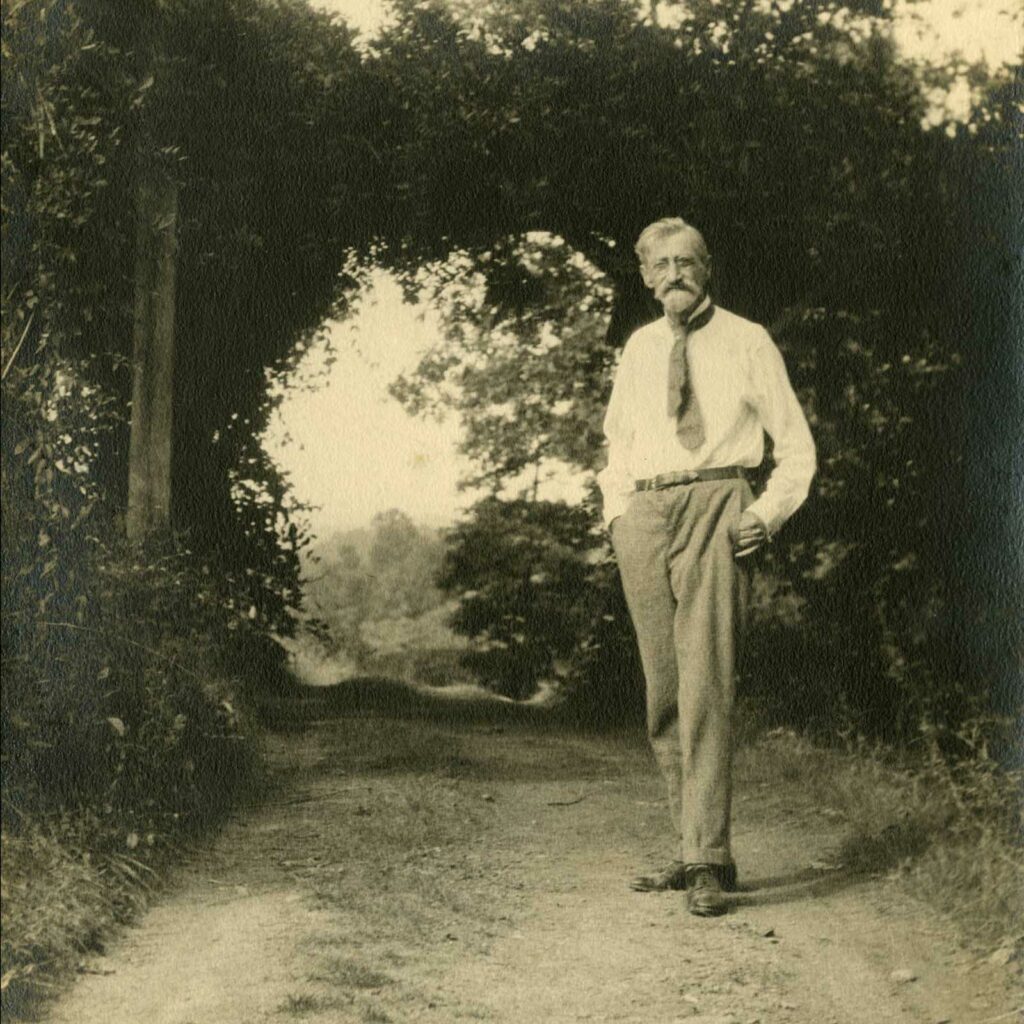
Both Steele and Adams were convinced that they would never run out of painting subjects in the Whitewater Valley, which prompted Steele and Adams to acquire a spacious home there in 1898. Steele’s wife, Libbie, named it the “Hermitage”.
The Hermitage became famous through the success of its artists. Hoosier Group members William Forsyth and Otto Stark also visited and painted there. It was used as a summer home by both the Steele and Adams families for several years, from 1898 to 1907.
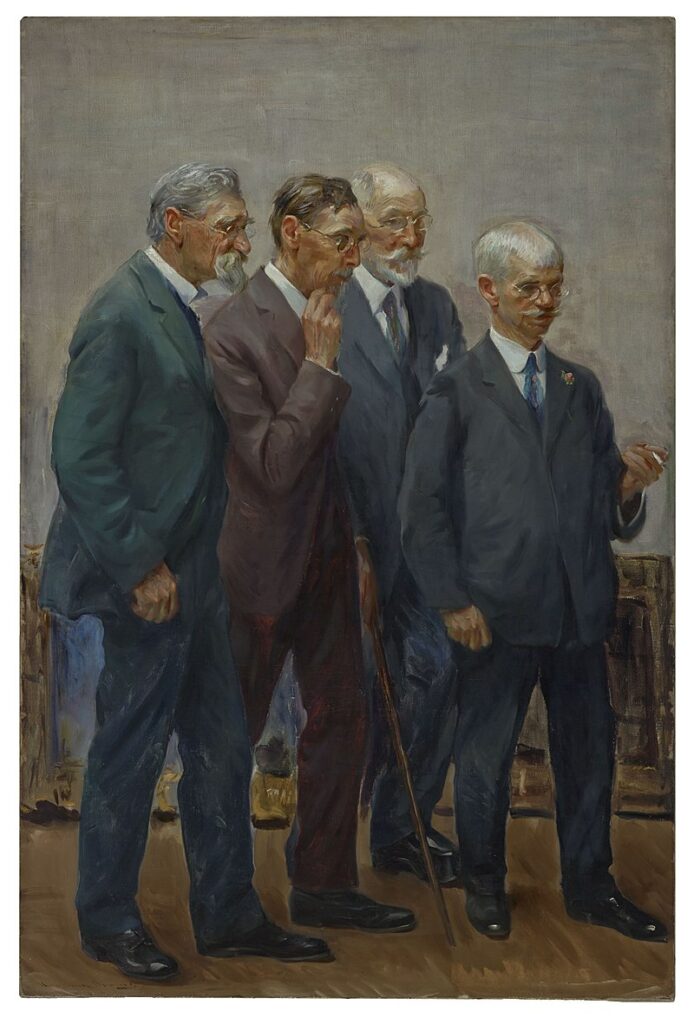
The artists intended the Hermitage to be a summer retreat, but when Adams married Winifred Brady in 1898, the Hermitage became their permanent home. Adams also ran an art school from the house for several years.
Steele and Adams added studios on opposite ends of the existing house. Steele on the south end and Adams on the north end. The artists added two studios on the home in 1898. The studio on the north end of the house was used by J. Ottis Adams, and the studio on the south end of the house was used by T.C. Steele.
Steele sold his interest to Adams, in 1907, following the death of his first wife “Libbie” to tuberculosis in 1899. Adams’ wife, Winifred Adams, also an accomplished artist, ended up using Steele’s studio after he moved.


The Hermitage, circa 19013; Studio space inside The Hermitage4
The Artists’ Retreat
Originally built in 1835, Steele and Adams reconfigured The Hermitage to meet their artistic demands and family needs, adding studio space and a large front porch.
The restyled bungalow/ American craftsman structure rises 1 ½ stories, fronted by the full-width, 112 foot-long porch, supported by 17 tapered columns, and includes 19 rooms, and 6 bedrooms. The house has changed little since Adams and Steele’s time there. In 2004, The Hermitage was listed on the National Register of Historic Places.



Daisy Steele enters The Hermitage5; Stained glass doors by Rembrandt “Brandt” Steele; T.C. Steele, J. Ottis Adams, and family members pose on the front porch of The Hermitage6
The stained glass french door was created and installed in 1898 by T.C. Steele’s son, Rembrandt (Brandt) Steele. This door contains 406 individual pieces of stained glass and separated T.C. Steele’s studio from the living room of the home. The door remains functional and in the original location to this day.
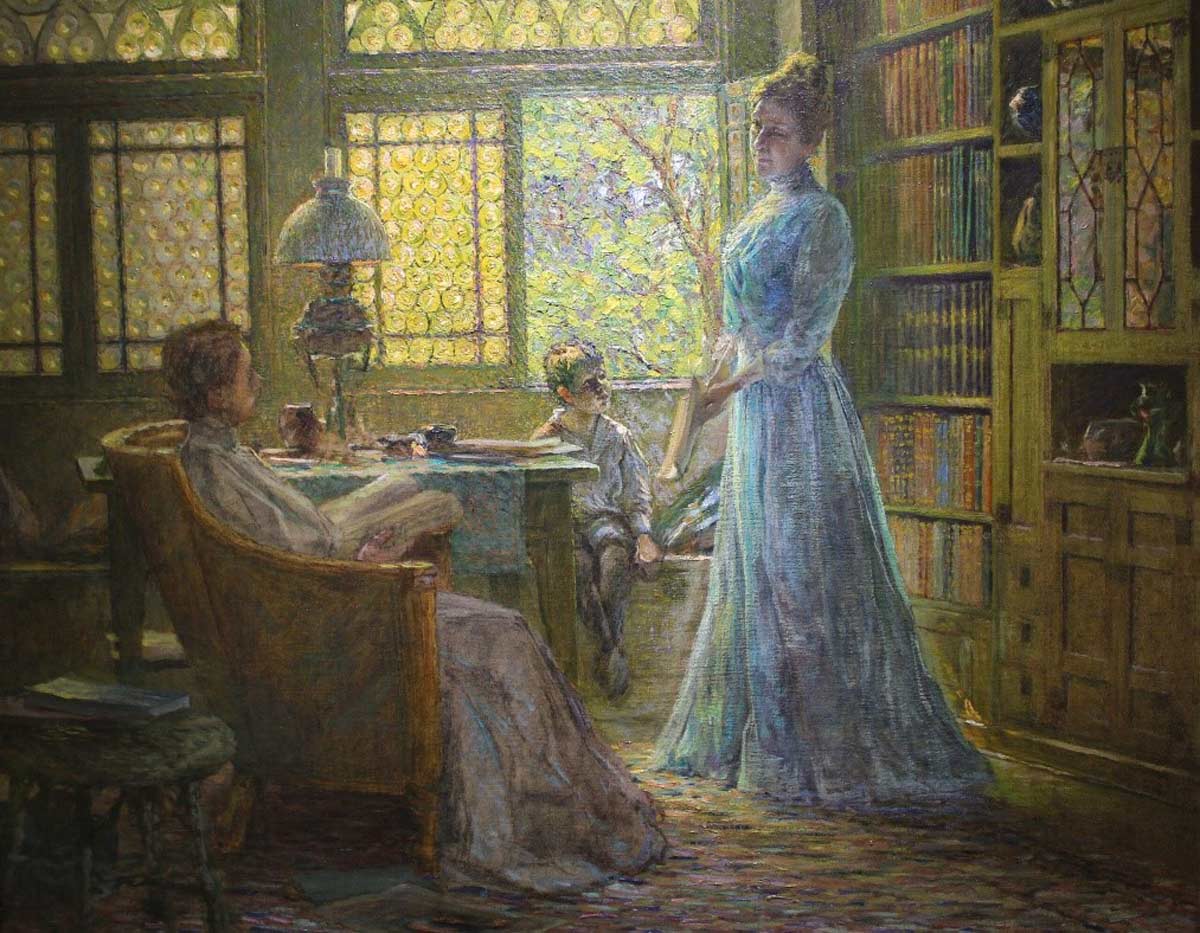
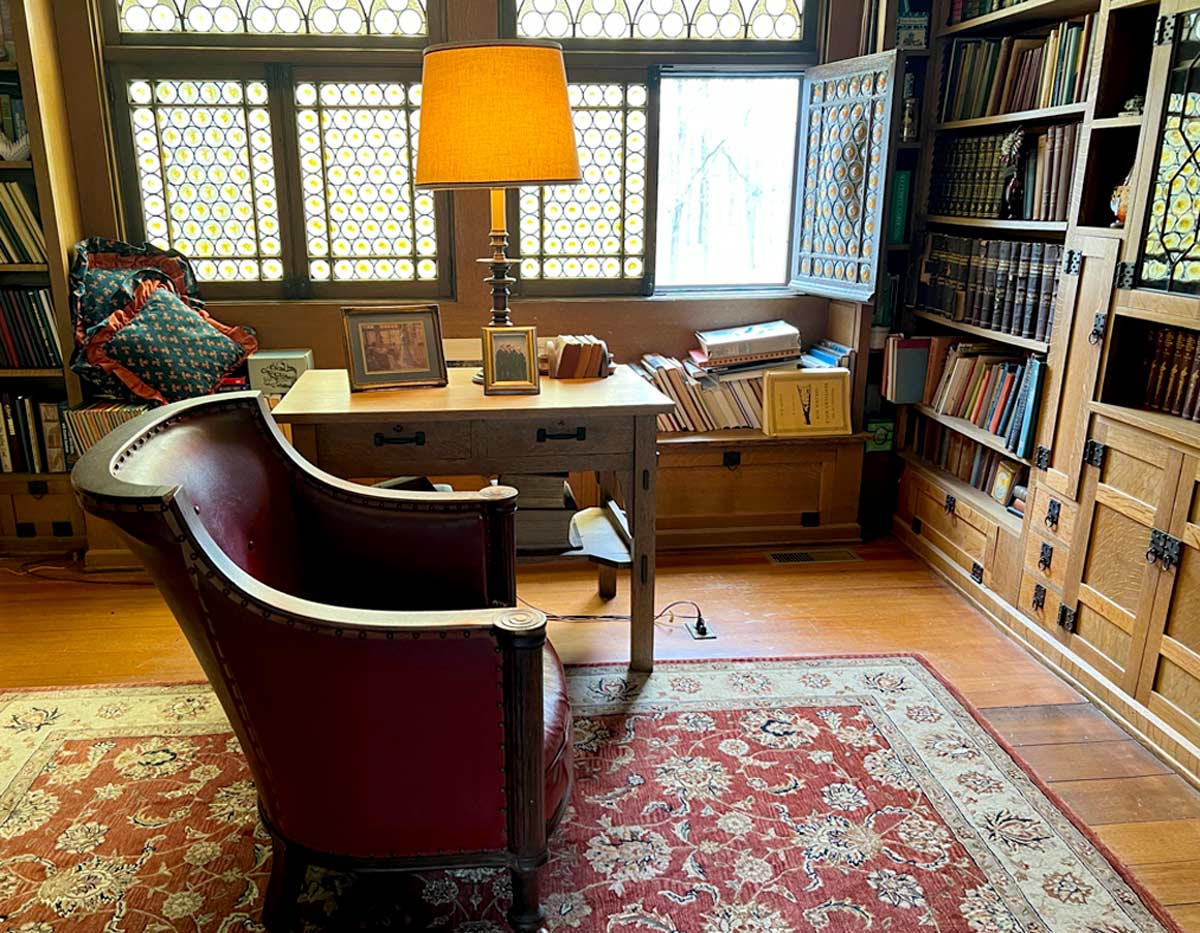
T.C. Steele’s studio on the south end of house (Pump organ, square piano and Victrola that plays 78 records) was left by Adams’ from their time in the home. This is how T.C. Steele’s studio at the Hermitage looks today.
Much of the 19-room home contains artifacts, furniture and original architectural features. The studios of Steele and Adams are largely unchanged in design since the period the artists painted in these rooms. The house library of J. Ottis Adams still contains the books he and his wife Winifred collected and they remain in their places in the built-in bookcases to this day.
Be our Guest
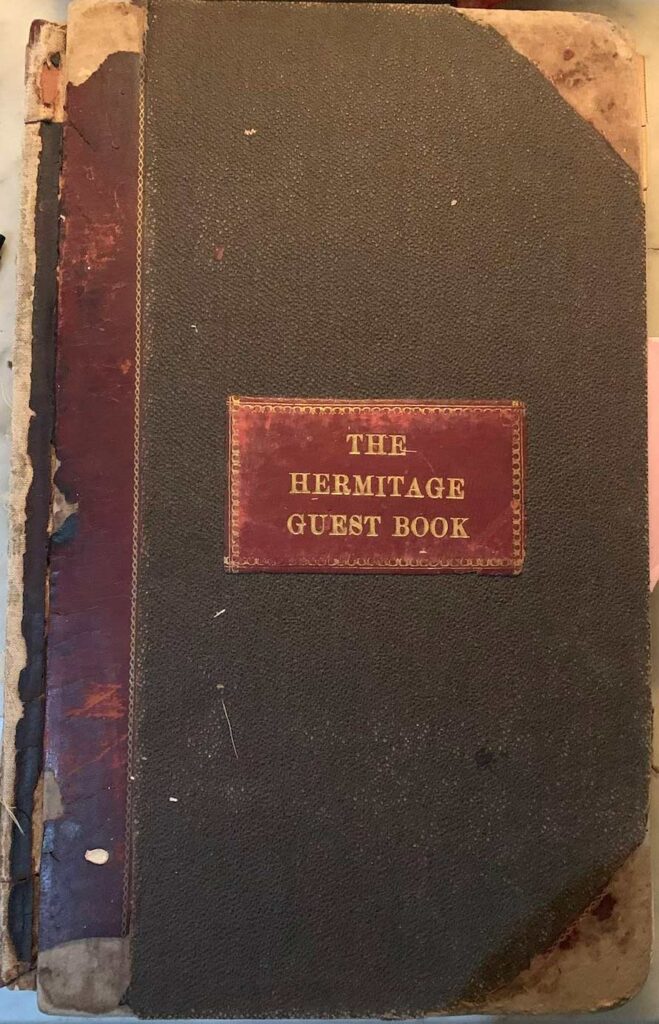
The Hermitage Guest Registration Book, which dates back to 1914, continues to be utilized even in the present day. Originally presented as a Christmas gift to the Adams family by Aunt Sabrina Wolfe Willson from Marion, Indiana, in 1914, the book holds significant historical value. Within its pages, the second and third entries consist of insightful poems by Shakespeare and Emerson, emphasizing the importance of welcoming guests into one’s home. The inaugural guest entry on December 29, 1914, features John Goodwin and his daughters Martha and Margaret, who were esteemed residents of Brookville.
Beginnings in Whitewater Valley
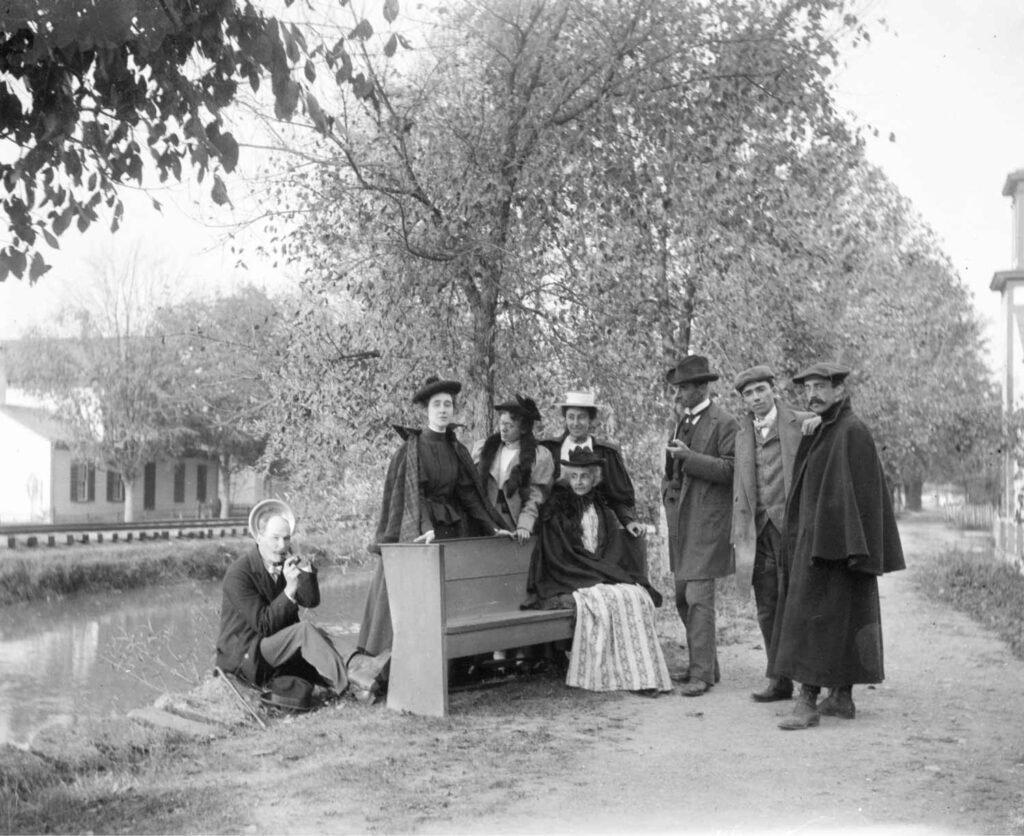
The Wagon
The two artists first rented a home in Metamora along the Whitewater Canal in 1896 and 1897. And in 1897, Steele commissioned the building of a studio wagon, which he used to travel around and paint the countryside. Two years later, in 1898, Steele and Adams purchased the Brookville mansion they named The Hermitage.

“Steele was weary with the months of portrait work and finally in the middle of October, (1897) with Libbie and Daisy, he loaded up the studio wagon and went to Metamora, the little Franklin County village in the Whitewater Valley to paint landscapes.”
Wilbur Peat10
The Steele family visited Metamora in the Whitewater Valley often in the 1890’s. This area reminded the family of their time in Germany when T.C. Steele studied at the Royal Academy in Munich, Germany from 1880-1885.
The family often visited Metamora in the Whitewater Valley where the area reminded them of Germany.
Steele and Adams rented this Lovers Lane duplex during the summer and fall of 1896 and 1897. The house sits on the Whitewater Canal in Metamora on the far east end of Lovers Lane and remains today. The Whitewater Canal in Metamora is an Indiana State Historic Site, managed by the Indiana State Museum.
Related Steele Works
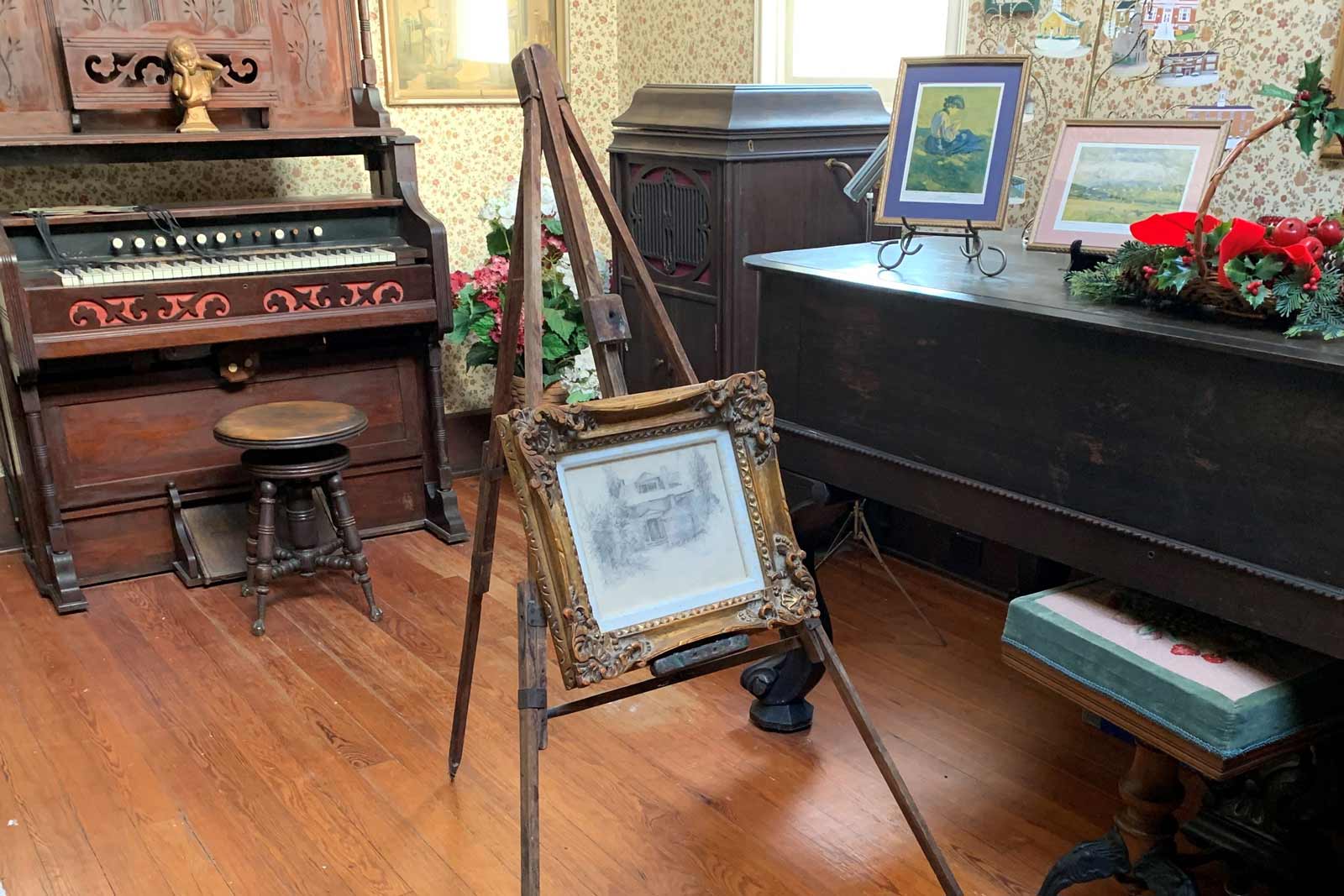
T.C. Steele completed a pencil drawing of the “Hermitage” that currently hangs in the living room of the historic house. This pencil drawing is sitting on a wooden easel used by J. Ottis Adams in the foreground of the studio of T.C. Steele.

In the Whitewater Valley Near Metamora
1894, Oil on Canvas
By Permission, Richmond Art Museum
The Whitewater Valley began seeing development in the early 1800’s when Indiana pioneers needed a way to transport their goods from this rich and fertile valley. The first canal boat arrived in Brookville in 1839. The 15-mile stretch of canal between Laurel and Brookville, Indiana was placed on the National Register of Historic Places in 1973.
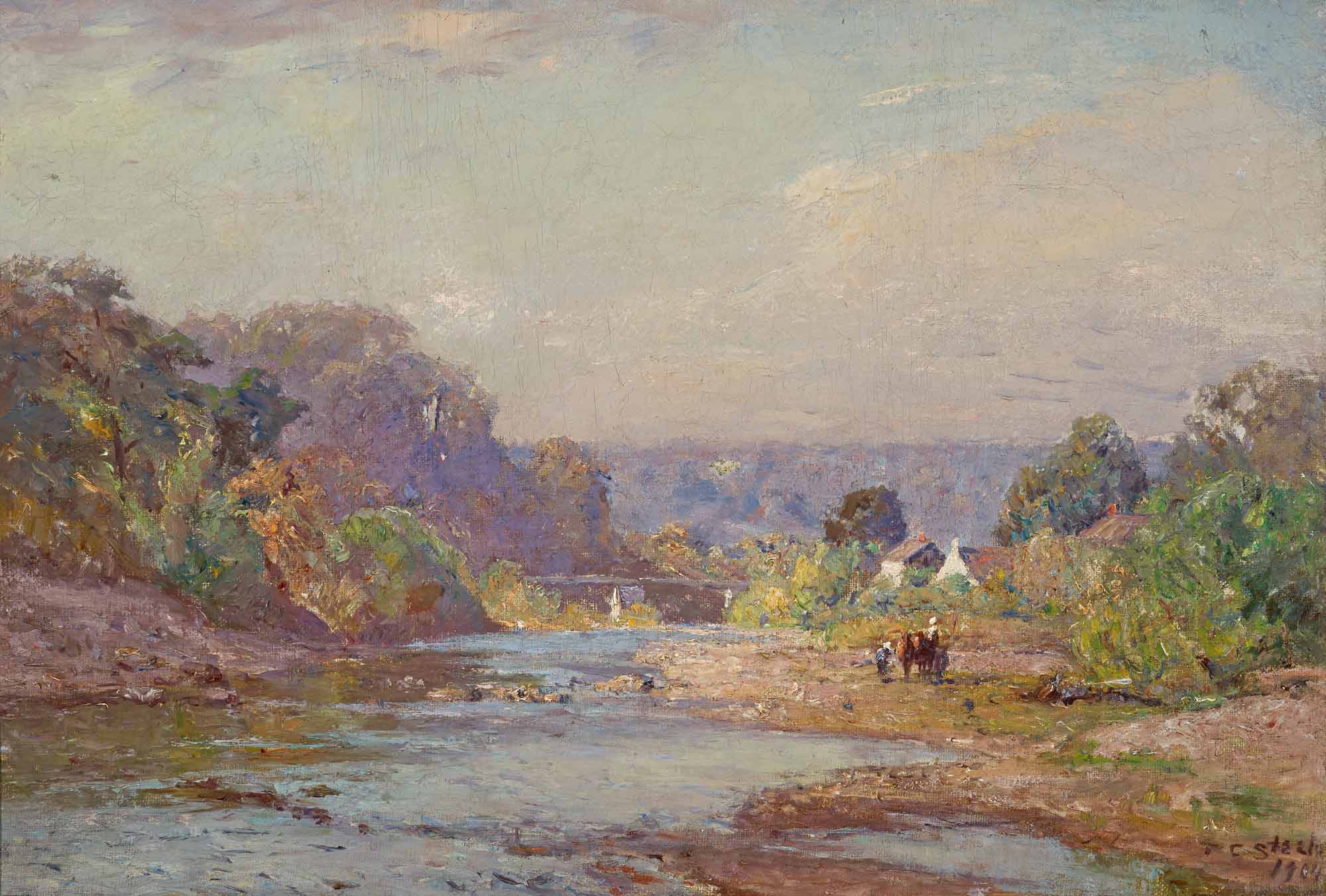
Brookville Landscape
1904, Oil on Canvas
Previously in the Indianapolis Museum of Art Collection, bequest of Helen Marie Willeford, given to museum by her estate in 2001, now in private collection
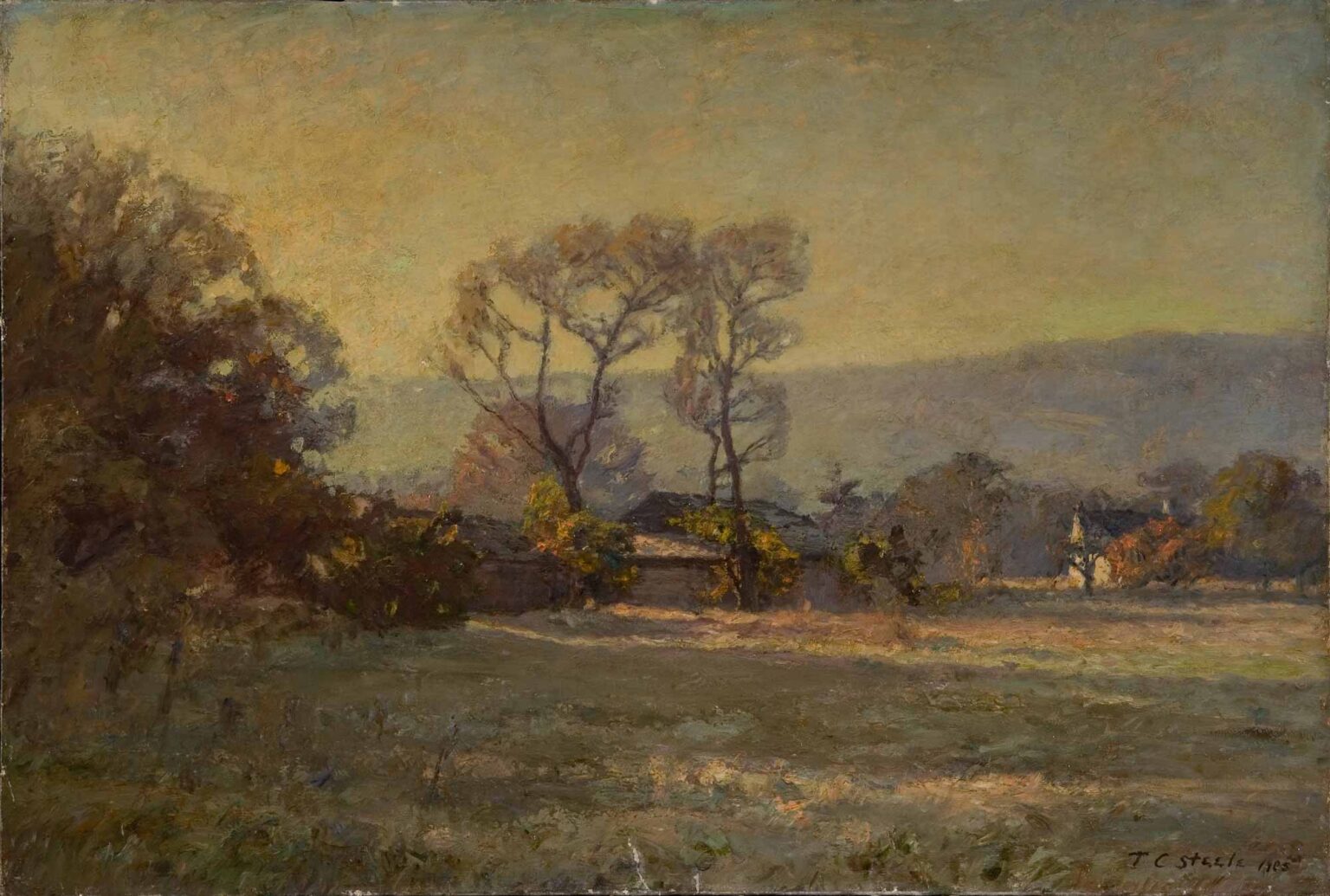
Frosty Morning – Brookville
1905, Oil on Canvas
By permission, David Owsley Museum of Art, Ball State University
Nearby Attractions

The Hermitage Bed & Breakfast
650 E. 8th Street
Brookville, Indiana 47012
An overnight stay at The Hermitage is an excellent way to experience the home of these artists and the natural beauty of the area they loved to paint. The Brookville Historic District is listed on the National register of Historic Places.
We encourage visitors of this site to spend a night or weekend at The Hermitage Bed & Breakfast. Martha Shea, the Innkeeper has owned this property for the past 42 years. Visitors can sit on the 112 foot front porch, directly in front of the east fork of the Whitewater River.
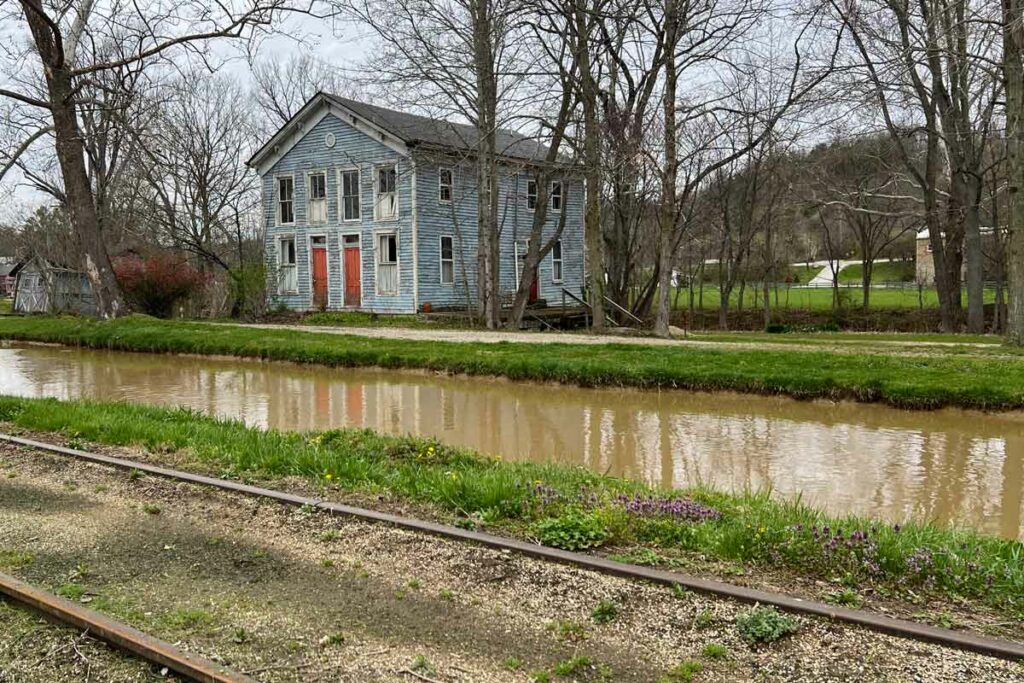
lover’s lane duplex
Metamora, Indiana
We highly recommend taking a quick drive of 8 miles to Metamora. There, you’ll find the duplex that T.C. Steele rented in 1896 and 1897. It still stands on the east end of Lovers Lane, next to the canal. Steele’s studio in Metamora was situated in a house directly across from it. However, getting there wasn’t as straightforward as it seemed. The canal, the railroad, and the street lay between them. Although the actual distance was no more than a hundred feet, as noted by Libbie in her letter to an Indianapolis friend, they had to travel three times that far to reach the studio. Even so, she expressed her joy in being able to visit the studio daily.
“I can go over every day and enjoy the progress of his work, and I am very happy to tell you he is coming on finely with it.”
Libbie Steele11
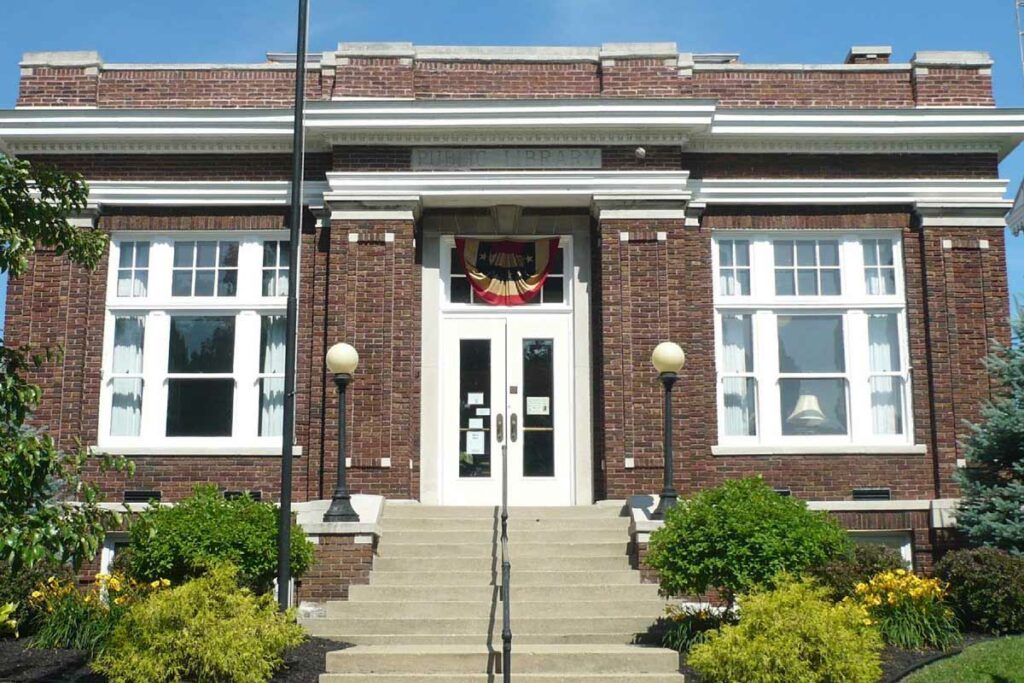
Franklin County Public Library
Immerse yourself in the Brookville Historic District with a visit to the Franklin County Public Library, an iconic Carnegie Library constructed in 1912. Inside, you can admire two paintings by T.C. Steele: “Brookville along The East Fork River Bank” (1904) and “Bend of East Fork Whitewater” (1908), donated by the Steele family. Additionally, don’t miss the opportunity to discover three paintings by J. Ottis Adams, including “The Old Speer Mill,” “Edge of the Field,” and “Portrait of Winnie Adams,” as well as a captivating still life titled “Statue of Mary” by Winifred Brady Adams, J. Ottis Adams’ wife and fellow artist.
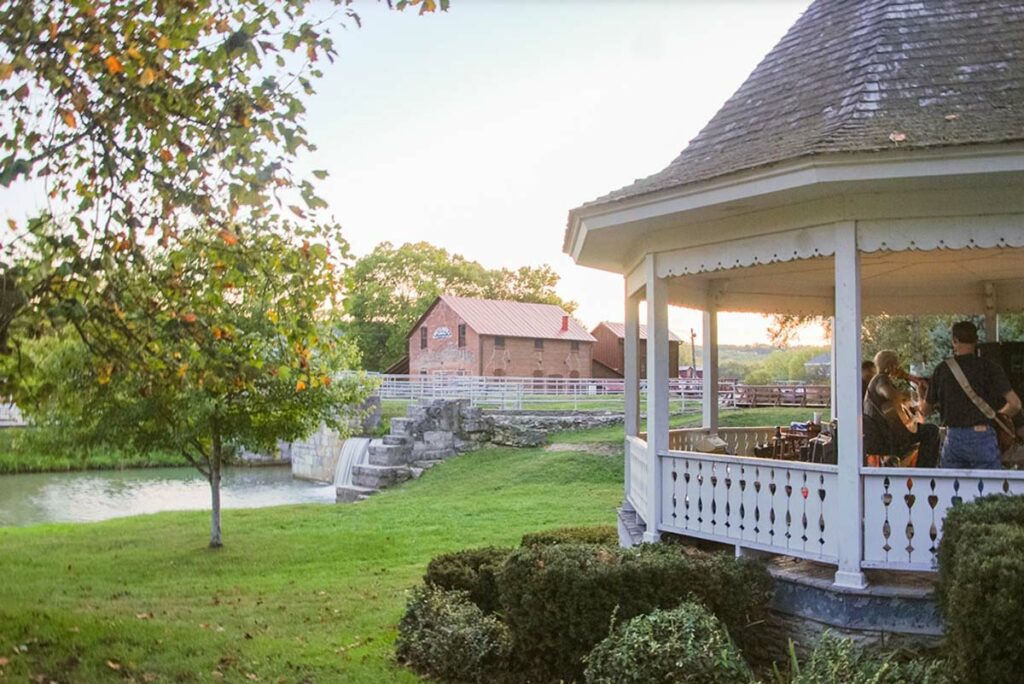
Whitewater Canal Historic District
Drive a section of the Whitewater Canal Scenic Byway from Brookville to Metamora on US 52 (8 mi) and see the Whitewater Valley that T.C. Steele loved to paint. Bike or hike the Whitewater Canal Trail from Metamora Trailhead or Yellow Bank Trailhead and experience the natural landscape of T.C. Steele paintings.
Suggested Itinerary
- Stamp your digital passport at the The Hermitage.
- Find the historical marker placed by Daughters of the American Revolution (DAR).
- Stay at the Hermitage and sign the guest book dating back to 1914, still used today.
- Visit T.C. Steele’s duplex rental on Lovers Lane in Metamora.
- Take a stroll through the Brookville Historic District and visit the Franklin County Public Library to view paintings by T.C. Steele, J. Ottis Adams and Winifred Adams.
- Stop by the Whitewater Canal Historic District to see the old mill and hotel.
- Explore the nearby Whitewater Memorial State Park.
References
1 T. C. Steele. Indiana Historical Society Digital Images. Indiana Historical Society, 2017. https://images.indianahistory.org/digital/collection/p16797coll51/id/378/rec/117.
2 Adams, Wayman. “The Art Jury,” 1921. Indianapolis Museum of Art. Indianapolis, Indiana.
3 Winans, Ben. Hermitage from Across River. Indiana Historical Society Digital Images. Indiana Historical Society, 2010. https://images.indianahistory.org/digital/collection/ben/id/41/rec/36.
4 Interior View of an Artist Studio at the Hermitage in Brookville, Indiana. Indiana Historical Society Digital Images. Indiana Historical Society, 2009. https://images.indianahistory.org/digital/collection/V0002/id/1372/rec/2.
5 Daisy Steele Near the Garden at the Hermitage. Indiana Historical Society Digital Images. Indiana Historical Society, 2011. https://images.indianahistory.org/digital/collection/V0002/id/2584/rec/1.
6 Steele Family on Porch at The Hermitage. Indiana Historical Society Digital Images. Indiana Historical Society, 2017. https://images.indianahistory.org/digital/collection/p16797coll51/id/22/rec/3.
7 Adams, J. Otis. “The Library at the Hermitage,” 1905. Wabash College Elston Homestead.
8 J. Ottis Adams and T.C. Steele and Family, Metamora. Indiana Historical Society Digital Images. Indiana Historical Society, 2017. https://images.indianahistory.org/digital/collection/p16797coll51/id/19/rec/4.
9 “A Studio on Wheels.” The Indianapolis News, 7. October 30, 1896.
10 Perry, Rachel Berenson, Selma N. Steele, Theodore L. Steele, and Wilbur David Peat. The House of the Singing Winds: The Life and Work of T.C. Steele, 51. Indianapolis: Indiana Historical Society Press, 2016.
11 Perry, Rachel Berenson, Selma N. Steele, Theodore L. Steele, and Wilbur David Peat. The House of the Singing Winds: The Life and Work of T.C. Steele, 45. Indianapolis: Indiana Historical Society Press, 2016.
* Indiana Magazine of History, Vol 1, No. 4 1905, pp. 204-208.

